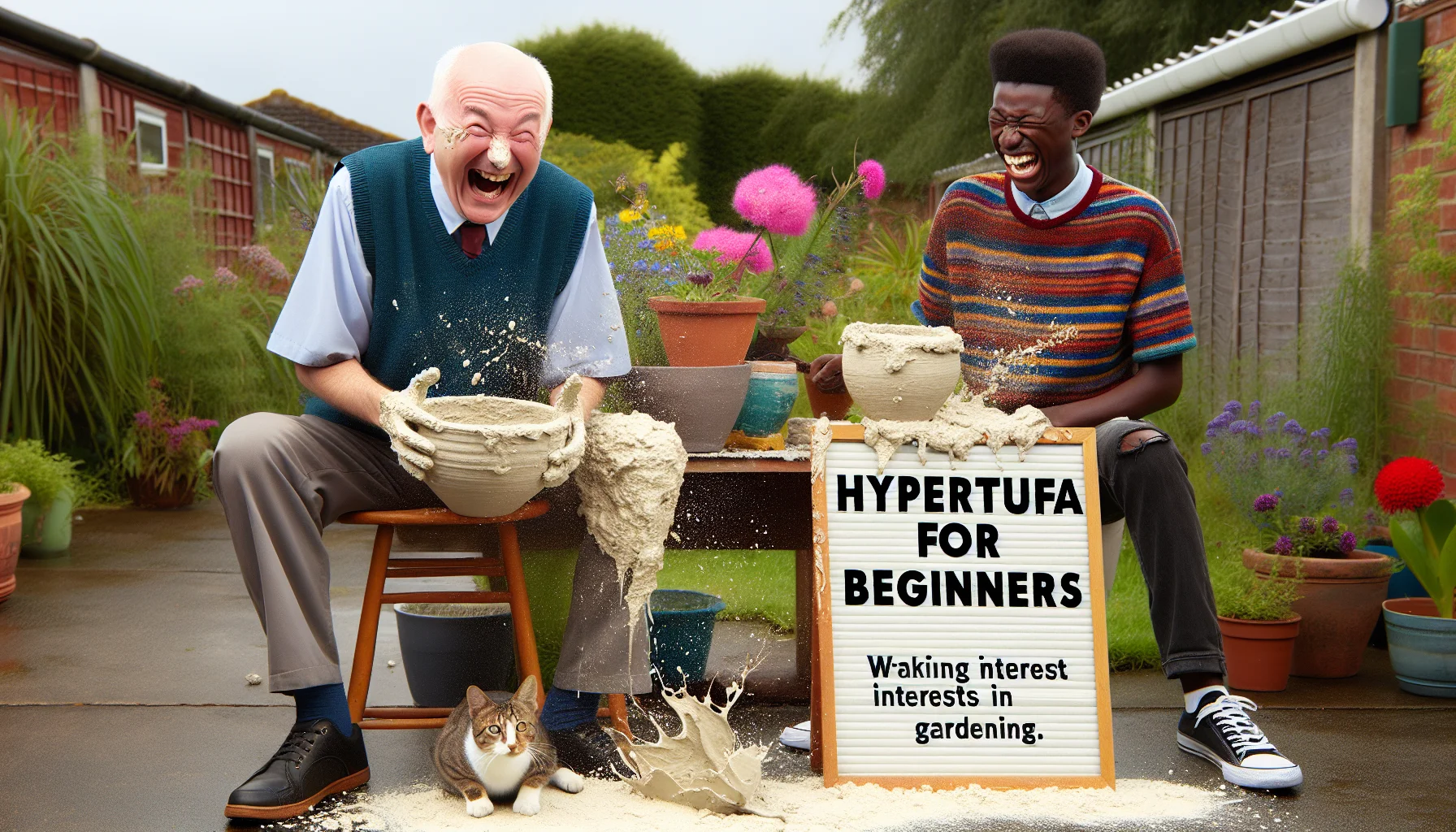Hypertufa for Beginners Quiz
Test Your Knowledge
Question of
Hypertifua for Beginners: An Introduction
Hypertufa is a manmade substitute for natural tufa, which is a slowly precipitated limestone rock. Gardeners and hobbyists use hypertufa to make planters, pots, and decorative garden pieces. The material is favored for its versatility, light weight, and porous nature, which is ideal for plant growth. Creating hypertufa involves mixing certain proportions of Portland cement, peat moss, and perlite, offering a perfect DIY project for those looking to personalize their garden spaces with unique, rustic, and eco-friendly elements.
Materials Needed for Hypertifua Projects
- Portland cement
- Peat moss
- Perlite or vermiculite
- Water
- Molds or forms
- Non-stick cooking spray or vegetable oil (for mold release)
- Protective gear (gloves, dust mask)
- Bucket or wheelbarrow (for mixing)
- Trowel or scoop
- Wire brushes or sandpaper (for finishing touches)
Step-by-Step Guide to Making Your First Hypertufa Pot
Creating a hypertufa pot is a fun and rewarding DIY project. Hypertufa is a lightweight material made from a mixture of Portland cement, peat moss, and perlite, making it perfect for crafting unique and rustic garden containers. Follow these steps to make your own hypertufa pot.
- Gather all necessary materials and tools: Portland cement, peat moss, perlite, water, a large mixing container, protective gloves, a mask, and molds for your pot.
- In your mixing container, combine 1 part Portland cement, 1.5 parts peat moss, and 1.5 parts perlite. Mix these dry ingredients thoroughly.
- Add water slowly to the dry mixture, stirring continuously until you achieve a consistency similar to cottage cheese. It should be moldable but not too wet.
- Prepare your mold. You can use almost anything as a mold, such as a plastic container or a cardboard box. If you wish to have a pot with a drainage hole, insert a smaller object in the bottom of your mold where you want the hole to be.
- Wearing your gloves, press the hypertufa mixture into your mold. Start from the bottom, working your way up the sides, ensuring the walls of your pot are of even thickness.
- Once your mold is filled, tap the sides gently to remove any air bubbles. Cover the mold with a plastic sheet and let it cure in a cool, shaded area for 24 to 48 hours.
- After the curing time, carefully remove the hypertufa pot from the mold. At this point, the hypertufa will still be slightly soft. You can use a tool to smooth edges or make designs.
- Allow your new hypertufa pot to dry completely, which can take up to several weeks depending on the size of your pot and the humidity. Keep it in a shaded area and mist it with water periodically to prevent it from drying too quickly and cracking.
- Once fully cured and dry, your hypertufa pot is ready to be used. You can plant directly into it or use it as a decorative piece in your garden.
Design Ideas for Hypertufa Projects
Hypertufa projects offer a unique and rustic charm to any garden setting, making them perfect for both beginners and experienced gardeners looking to add a personal touch to their outdoor spaces. When starting out, consider experimenting with different molds to shape your hypertufa creations. Common household items like bowls, boxes, or even leaves can serve as molds to give each piece a distinctive look. Adding color pigments to the mix before molding can also introduce vibrant or subtle tones to your garden palette. For a more textured appearance, embedding small stones, glass pieces, or tiles into the surface of your hypertufa can create intricate patterns and add an extra layer of visual interest. Remember, the beauty of hypertufa lies in its versatility and the endless possibilities for customization, so don't hesitate to let your creativity flow and tailor your projects to fit the specific needs and aesthetic of your garden.
Caring for Your Hypertufa Creations
Hypertufa items, known for their rustic charm and durability, are a fantastic addition to any garden. To ensure these creations maintain their beauty and structural integrity, proper care is essential. Initially, it is important to cure hypertufa for at least three weeks after crafting, allowing it to fully harden and develop pH levels safe for plant life. During this period, keep your hypertufa moist and in a shaded area to prevent cracking. Once cured, placement in the garden should consider drainage and exposure to elements; hypertufa is frost-resistant but extreme conditions should be avoided. Regular cleaning with water and a soft brush will keep moss and algae at bay, preserving the unique texture of your hypertufa pieces. With these simple steps, your hypertufa creations will enhance your garden for years to come.
Troubleshooting Common Hypertufa Issues
| Common Problems | Solutions |
|---|---|
| Mixture is too dry | Add small amounts of water gradually until the mixture reaches a cottage cheese-like consistency. |
| Mixture is too wet | Add more dry ingredients in small amounts until the desired consistency is achieved. |
| Cracks after drying | Ensure the mixture is not too dry when forming your project. Cover the project with plastic to slow down the drying process. |
| Surface is too rough | Use a finer grade of peat moss and sand. After unmolding, use a wire brush gently to smooth the surface. |
| Mold or mildew growth | Ensure the project is kept in a well-ventilated area to dry. If mold appears, brush it off and expose the project to sunlight. |
| Weak or crumbly final product | Ensure the correct ratio of cement, peat moss, and perlite/sand is used. Increase the amount of cement slightly for a stronger mix. |












